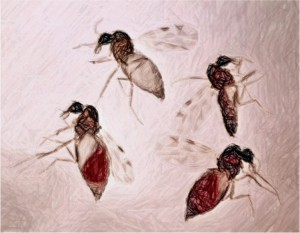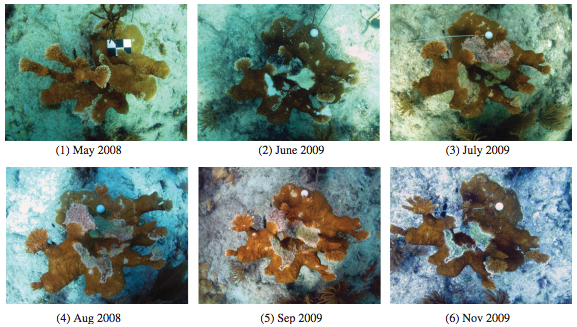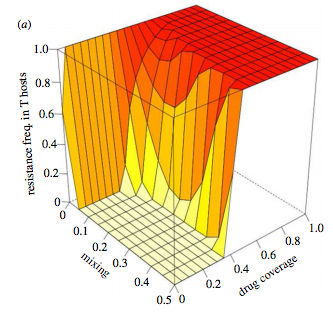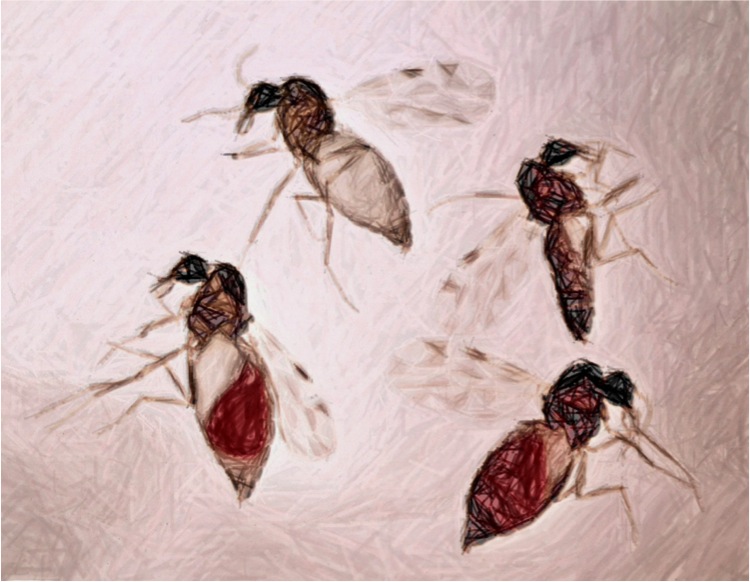The Odum School’s Drew Kramer led a study on the recent spatial spread of Ebola in West Africa, and former lab member Laura Alexander and Andrew were contributors to this work, which was recently published in the Royal Society’s Open Science journal. Among the findings were that a gravity model provided a good description of the spread. This means that transmission between towns depended on the population size of each, and their distance from each other. Additionally, if one town was inside the hotspot of Guinea, Liberia and Sierra Leone and the other was outside, then risk of transmission out of the core region was lower, due to border closures. Individual movement patterns from cell phone data did not provide a competitively good fit. Counterfactual scenario building showed that the initial town infected would have a large effect on the regional extent of the spread of Ebola. As well as highlighting the importance of integrated geography in controlling epidemic processes, the study provides methods to predict vulnerable towns and those where intervention may have the most impact.
All posts by Andrew Park
The big picture of infectious diseases
Macroecology is big. Spatially, temporally, taxonomically. Andrew is part of working group applying ideas from macroecology to host-parasite data. To kick things off, the group has written a review/synthesis paper explaining the goals and outlining the challenges and opportunities that lie ahead. It’s here.
Coral diseases under the microscope
As part of large group, lab members Ashton, Brett and Andrew have been exploring some of the challenges in identifying causal agents of disease affecting coral populations. The host species is elkhorn coral, which has been experiencing alarming declines in recent times. These studies help to develop surveillance, diagnostic and modeling approaches to learn as much as we can about this important reef-building coral species.
- Joyner et al. 2015, Applied Environmental Microbiology, “Systematic analysis of white pox disease in Acropora palmata of the Florida Keys and the role of Serratia marcescens“
- Sutherland et al. 2016, Philosophical Transactions of the Royal Society of London B, “Shifting white pox etiologies affecting Acropora palmata in the Florida Keys, 1994-2014“
Refugia and drug resistance
MRSA and extensively drug-resistant TB are just two examples where we’re running out of solutions to combat pathogens. In animal health, refugia are increasingly discussed as a management strategy. Refugia are untreated subpopulations – they provide a safe haven for pathogens. By connecting refugia with drug-treated populations there is hope to limit the spread of drug resistance at an acceptable cost in terms of disease burden. Basically, the connections let drug-susceptible pathogens into the treated population to stop their drug-resistant counterparts taking over. We built a model to try and clarify when this sort of strategy might work (Park et al. 2015, Biol. Lett.). We found that the anticipated outcome (strong connections = high prevalence and low resistance in treated groups) was too simplistic. Rather, there are epidemiological and evolutionary interactions at work and these can be understood by decoupling transmission and selection through mathematical analysis.
(How) does vector species richness increase parasite transmission?
 This is a question we got interested in through hemorrhagic disease, a vector-borne viral disease affecting white-tailed deer. We observed that disease reporting rate was positively associated with vector species richness (VSR: where species of midge belong to the large genus Culicoides). We thought this could be because high VSR:
This is a question we got interested in through hemorrhagic disease, a vector-borne viral disease affecting white-tailed deer. We observed that disease reporting rate was positively associated with vector species richness (VSR: where species of midge belong to the large genus Culicoides). We thought this could be because high VSR:
- is associated with high vector abundance
- increases the likelihood that the vector community contains a highly competent subset
- is associated with long seasonal transmission if vector species in a community exhibit distinct phenologies
We found no support for 1 and 2 in our system, but strong support for 3. This means that VSR can manifest as functional diversity, facilitating parasite transmission. It remains to be seen if this operates more widely in vector borne diseases.





